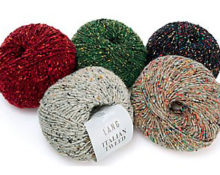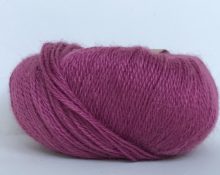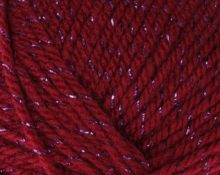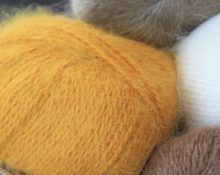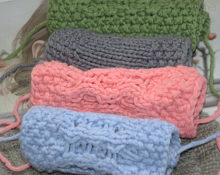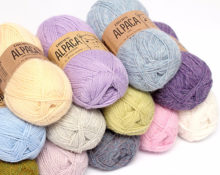Chenille is back in trend. This is the name for yarn with a plush surface. It looks so advantageous in a skein that many needlewomen are thinking about purchasing it. Why are these knitting threads interesting, what is it, is it worth using them for a sweater and how to care for them, read on.
What kind of yarn is chenille?
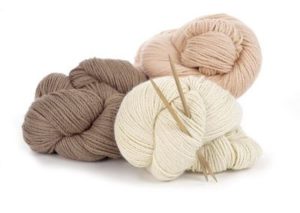 It is quite expensive to produce because the technology for its production is very complex. Chenille thread resembles a furry caterpillar, and in the product it looks like knitted velvet or a special type of fur. In fact, chenille has two or more warp threads, in the center of which the hairs are planted. The base is twisted, the hairs are evenly distributed around the center and form a short pile that looks very attractive.
It is quite expensive to produce because the technology for its production is very complex. Chenille thread resembles a furry caterpillar, and in the product it looks like knitted velvet or a special type of fur. In fact, chenille has two or more warp threads, in the center of which the hairs are planted. The base is twisted, the hairs are evenly distributed around the center and form a short pile that looks very attractive.
Types of yarn with descriptions
Chenille is made from both natural and synthetic fibers. Based on the type of raw material, it can be divided into the following types:
 cotton The most unfortunate type of plush yarn.It does not have sufficient softness and wear resistance. Cotton fibers quickly stick together, resulting in abrasions, bald spots, and partial loss of the fiber from the base - bald spots.;
cotton The most unfortunate type of plush yarn.It does not have sufficient softness and wear resistance. Cotton fibers quickly stick together, resulting in abrasions, bald spots, and partial loss of the fiber from the base - bald spots.;- viscose. It is characterized by greater softness than the cotton variety, and items made from it will be worn comfortably for a long time. However, the viscose variety is afraid of sunlight, as it is prone to fading, and requires only dry cleaning; when done by hand or machine, things are stretched and deformed;
- acrylic. The type of chenille most beloved by knitters and the most successful in all quality characteristics. It is light, easily dyed, and is not susceptible to ultraviolet radiation. Products made from it will retain their original shape for a long time, will always look elegant, and are not afraid of hand or automatic washing.
Pros and cons of threads
Some strengths and weaknesses have already been discussed, but besides these points, there are many more positive qualities for which this yarn is loved:
 luxurious velvety appearance in a skein, and even better in the product;
luxurious velvety appearance in a skein, and even better in the product;- rich texture and depth of color;
- very comfortable tactile sensations: softness, tenderness;
- products made from it are warm and elegant.
Important! Things knitted from chenille do not irritate the skin and are hypoallergenic.
It’s a pity that chenille also has a lot of disadvantages:
- the thread is subject to abrasion;
- does not hold its shape, so you cannot knit tight styles and elastic bands;
- You can knit only with satin stitch, and with thinner threads - a limited number of patterns and openwork;
- thick threads are inconvenient when crocheting, and thin threads on knitting needles can warp the part of the item being knitted;
- the cut should be simple and concise, no features will be visible on this yarn;
- the products are ventilated, therefore, in some conditions there can be no talk of retaining heat;
- things made of chenille are not intended for constant wear, because they quickly wear out, starting from the edge of the sleeve and neckline;
- products stretch greatly in width, this must be taken into account when knitting;
- the tip of the thread crumbles, it needs to be fixed with sewing thread;
- high-quality chenille has a high cost.
What kind of things are knitted from it?
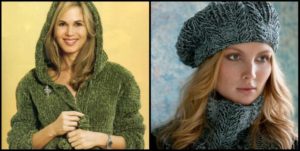 Despite the listed disadvantages, many needlewomen knit various products from chenille. The decisive factor in this choice is its wonderful velvety surface, which outweighs all the difficulties in operation and maintenance.
Despite the listed disadvantages, many needlewomen knit various products from chenille. The decisive factor in this choice is its wonderful velvety surface, which outweighs all the difficulties in operation and maintenance.
You can knit beautiful, warm and useful things from chenille:
- clothes - scarf, hat, sweater, vest, cardigan, sleeveless vest;
- interior items - cape, blanket, stole, decorative pillow, soft toy;
- individual fragments - ornaments knitted in this way look very interesting.
Important! When using chenille in finishing products made from other yarns, the effect of using finishing fur is achieved.
How to care for plush yarn?
- Items made from chenille yarn should not be washed frequently. It is best to wash them by hand or take them to a workshop for chemical treatment;
- When washing, the water should be warm;
- Drying can only be done in a horizontal position, with the product completely spread out on a flat surface;
- You can’t iron things made from plush yarn - the fibers will immediately shrink and won’t straighten out, the fabric will stretch greatly;
- Store only folded without loading on top. Hanging items are stretched in width along the shoulder seams and along the length with deformation of the side joints.


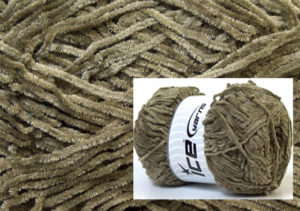 cotton The most unfortunate type of plush yarn.It does not have sufficient softness and wear resistance. Cotton fibers quickly stick together, resulting in abrasions, bald spots, and partial loss of the fiber from the base - bald spots.;
cotton The most unfortunate type of plush yarn.It does not have sufficient softness and wear resistance. Cotton fibers quickly stick together, resulting in abrasions, bald spots, and partial loss of the fiber from the base - bald spots.;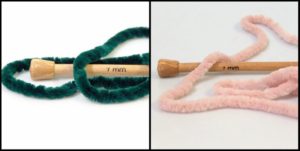 luxurious velvety appearance in a skein, and even better in the product;
luxurious velvety appearance in a skein, and even better in the product; 0
0